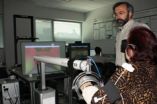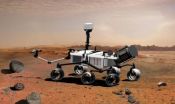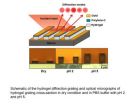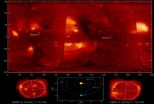(Press-News.org) SALT LAKE CITY, Feb. 8, 2011 – Researchers at the University of Utah's Comprehensive Arrhythmia and Research Management (CARMA) Center have found that delayed-enhancement magnetic resonance imaging (DE-MRI) holds promise for predicting the risks of strokes, the third leading cause of death in the U.S. Their latest study on a novel application of this technology appears in the Feb. 15 issue of the Journal of the American College of Cardiology. (http://content.onlinejacc.org/cgi/content/abstract/57/7/831)
The study included 387 patients who were treated for atrial fibrillation (AF) at either the University of Utah (Salt Lake City) or Clinical Center Coburg (Coburg, Germany). AF is a little known heart rhythm disorder that affects more than 3.5 million Americans and causes more than 66,000 deaths a year. Individuals with AF are two to seven times more likely to suffer a stroke than the general population.
The purpose of the study was to determine if there was an association between an AF patient's heart damage (for example, left atrial [LA] fibrosis), which was detected using DE-MRI, and commonly used markers for the risk of stroke, specifically the CHADS2 index. Although further prospective studies are needed, the preliminary results indicate that DE-MRI-based detection of LA fibrosis is independently associated with prior history of strokes. The findings also provide preliminary evidence that the physiological features of the LA could be used, in addition to clinical features, when identifying stroke risk in patients.
"We believe this method can be a valuable tool for clinicians to use in conjunction with the CHADS2 index for risk analysis and decisions about anticoagulation medications when treating AF patients," said Nassir Marrouche, M.D., associate professor of cardiology and executive director of the CARMA Center and Director, Cardiac Electrophysiology Laboratories, for the University of Utah's Division of Cardiology.
"Potentially, this will lead to improvement in current risk stratification schemes and enhance our understanding of the risks of thromboembolic (stroke) events in AF patients. We also hope this will lead to the development of effective strategies for stroke prevention."
Although the anticoagulant warfarin is highly effective in preventing strokes, the drug also is associated with life-threatening hemorrhaging and requires intensive dosage monitoring. Risk stratification schemes have been developed to tailor anticoagulation therapy to the patients' risk, and the CHADS2 index is the most accepted risk stratification model. Yet while this index is a valuable tool for predicting cerebrovascular events in high-risk patients, clinicians rely more heavily on clinical judgment when predicting thromboembolic risk in moderate-risk patients, a substantial portion of the AF population. The identification of novel, independent risk factors by DE-MRI may supplement existing tools to help guide clinician judgment in better allocating anticoagulation therapeutic strategies, especially with moderate risk AF patients.
The study concluded that LA fibrosis as determined through the use of DE-MRI is "associated with an increased risk of thromboembolism in AF patients. Clinician use of both a CHADS2 index and a quantified measure of atrial fibrosis has the potential to provide a more rigorous risk assessment and improve future risk stratification schemes."
###
The University of Utah CARMA Center is conducting innovative research on the use of MRIs to treat atrial fibrillation. In 2009, it opened the first integrated electrophysiology (EP)-MRI research and clinical laboratory in North America. This year, it has begun a worldwide patient evaluation program at 16 international medical centers to investigate the use of delayed enhancement MRI to stage the progression of the disease. The CARMA Center also has developed the Utah AF Staging System, which enables early detection and "personalized" treatment and management for each atrial fibrillation patient.
Study shows delayed-enhancement MRI may predict, prevent strokes
JACC article also suggests technique can guide medication for atrial fibrilation patients
2011-02-09
ELSE PRESS RELEASES FROM THIS DATE:
Brief diversions vastly improve focus, researchers find
2011-02-09
CHAMPAIGN, Ill. — A new study in the journal Cognition overturns a decades-old theory about the nature of attention and demonstrates that even brief diversions from a task can dramatically improve one's ability to focus on that task for prolonged periods.
The study zeroes in on a phenomenon known to anyone who's ever had trouble doing the same task for a long time: After a while, you begin to lose your focus and your performance on the task declines.
Some researchers believe that this "vigilance decrement," as they describe it, is the result of a drop in one's "attentional ...
JAMA features NJIT biomedical engineer helping stroke patients
2011-02-09
The Journal of the American Medical Society ("Medical News & Perspectives", Jan. 19, 2011) featured the research of NJIT Associate Professor Sergei Adamovich, a biomedical engineer. Adamovich and his research partners, physical therapists Alma Merians, PhD, PT, and Eugene Tunik, PhD, PT, at the University of Medicine and Dentistry of New Jersey, have developed innovative robotic and virtual reality-based video game therapies to help stroke patients regain use of hands and arms.
JAMA reported that the efforts of this team are making headway. Twenty-four patients who ...
Why leatherback turtles linger in South Pacific Gyre, and why it matters
2011-02-09
VIDEO:
Tagging and tracking leatherback sea turtles has produced new insights into the turtles' behavior in a part of the South Pacific Ocean long considered an oceanic desert. The new data...
Click here for more information.
Leatherbacks. They are the Olympians of the turtle world – swimming farther, diving deeper and venturing into colder waters than any other marine turtle species. But for all their toughness, they have still suffered a 90 percent drop in their population ...
Tool makes search for Martian life easier
2011-02-09
RICHLAND, Wash. – Finding life on Mars could get easier with a creative adaption to a common analytical tool that can be installed directly on the robotic arm of a space rover.
In a recent paper published online in the journal Planetary and Space Science, a team of researchers propose adding a laser and an ion funnel to a widely used scientific instrument, the mass spectrometer, to analyze the surfaces of rocks and other samples directly on Mars' surface. The researchers demonstrated that the combined system could work on the spot, without the sample handling that mass ...
Hydrogels used to make precise new sensor
2011-02-09
WEST LAFAYETTE, Ind. - Researchers are developing a new type of biological and chemical sensor that has few moving parts, is low-cost and yet highly sensitive, sturdy and long-lasting.
The "diffraction-based" sensors are made of thin stripes of a gelatinous material called a hydrogel, which expands and contracts depending on the acidity of its environment.
Recent research findings have demonstrated that the sensor can be used to precisely determine pH - a measure of how acidic or basic a liquid is - revealing information about substances in liquid environments, said ...
Detecting pathogens in waterways: An improved approach
2011-02-09
This press release is available in Spanish.
U.S. Department of Agriculture (USDA) scientists have come up with a way to detect pathogenic Escherichia coli and Salmonella bacteria in waterways at lower levels than any previous method. Similar methods have been developed to detect pathogenic E. coli in meat products, but the approach by the scientists with USDA's Agricultural Research Service (ARS) represents a first for waterways.
ARS is USDA's principal intramural scientific research agency, and this research supports the USDA priority of ensuring food safety.
When ...
UT Study: Charismatic leadership can be measured, learned
2011-02-09
KNOXVILLE -- How do you measure charisma? That's the question UT professor Kenneth Levine seeks to answer.
Much has been written in business management textbooks and self-help guides about the role that personal charisma plays in leadership. But according to a newly published study co-authored by Levine, a University of Tennessee, Knoxville, communications studies professor, until recently no one was able to describe and measure charisma in a systematic way.
Levine said the large amount of academic literature on charismatic leadership never defined what it means to ...
The hitch in the drug? The itch in the drug
2011-02-09
Scratching deep beneath the surface, a team of researchers from the University of California, San Diego School of Medicine and three South Korean institutions have identified two distinct neuronal signaling pathways activated by a topical cream used to treat a variety of skin diseases. One pathway produces the therapeutic benefit; the other induces severe itching as a side effect.
The findings, published in this week's early online edition of the Proceedings of the National Academy of Sciences, point to the possibility of designing future drugs that effectively treat ...
Dramatic improvement in Parkinson disease symptoms
2011-02-09
New Rochelle, NY, February 8, 2011—Successful intranasal delivery of stem cells to the brains of rats with Parkinson disease yielded significant improvement in motor function and reversed the dopamine deficiency characteristic of the disease. These highly promising findings, reported in Rejuvenation Research, a peer-reviewed journal published by Mary Ann Liebert, Inc. highlight the potential for a noninvasive approach to cell therapy delivery in Parkinson disease–a safer and effective alternative to surgical transplantation of stem cells. The article is available free online. ...
NRL researchers view the sun in 3-D
2011-02-09
Beginning on February 6, 2011, the two STEREO spacecraft are 180 degrees apart providing Naval Research Laboratory (NRL) scientists with a 360-degree view of the Sun. NASA's STEREO (Solar Terrestrial Relations Observatory) spacecraft were launched on October 25, 2006, and have been gathering spectacular images of solar activity, especially solar storms, since the mission began.
A key component of the STEREO mission is NRL's Sun Earth Connection Coronal and Heliospheric Investigation (SECCHI), a suite of five scientific telescopes that observe the solar corona and inner ...
LAST 30 PRESS RELEASES:
UVA’s Jundong Li wins ICDM’S 2025 Tao Li Award for data mining, machine learning
UVA’s low-power, high-performance computer power player Mircea Stan earns National Academy of Inventors fellowship
Not playing by the rules: USU researcher explores filamentous algae dynamics in rivers
Do our body clocks influence our risk of dementia?
Anthropologists offer new evidence of bipedalism in long-debated fossil discovery
Safer receipt paper from wood
Dosage-sensitive genes suggest no whole-genome duplications in ancestral angiosperm
First ancient human herpesvirus genomes document their deep history with humans
Why Some Bacteria Survive Antibiotics and How to Stop Them - New study reveals that bacteria can survive antibiotic treatment through two fundamentally different “shutdown modes”
UCLA study links scar healing to dangerous placenta condition
CHANGE-seq-BE finds off-target changes in the genome from base editors
The Journal of Nuclear Medicine Ahead-of-Print Tip Sheet: January 2, 2026
Delayed or absent first dose of measles, mumps, and rubella vaccination
Trends in US preterm birth rates by household income and race and ethnicity
Study identifies potential biomarker linked to progression and brain inflammation in multiple sclerosis
Many mothers in Norway do not show up for postnatal check-ups
Researchers want to find out why quick clay is so unstable
Superradiant spins show teamwork at the quantum scale
Cleveland Clinic Research links tumor bacteria to immunotherapy resistance in head and neck cancer
First Editorial of 2026: Resisting AI slop
Joint ground- and space-based observations reveal Saturn-mass rogue planet
Inheritable genetic variant offers protection against blood cancer risk and progression
Pigs settled Pacific islands alongside early human voyagers
A Coral reef’s daily pulse reshapes microbes in surrounding waters
EAST Tokamak experiments exceed plasma density limit, offering new approach to fusion ignition
Groundbreaking discovery reveals Africa’s oldest cremation pyre and complex ritual practices
First breathing ‘lung-on-chip’ developed using genetically identical cells
How people moved pigs across the Pacific
Interaction of climate change and human activity and its impact on plant diversity in Qinghai-Tibet plateau
From addressing uncertainty to national strategy: an interpretation of Professor Lim Siong Guan’s views
[Press-News.org] Study shows delayed-enhancement MRI may predict, prevent strokesJACC article also suggests technique can guide medication for atrial fibrilation patients




